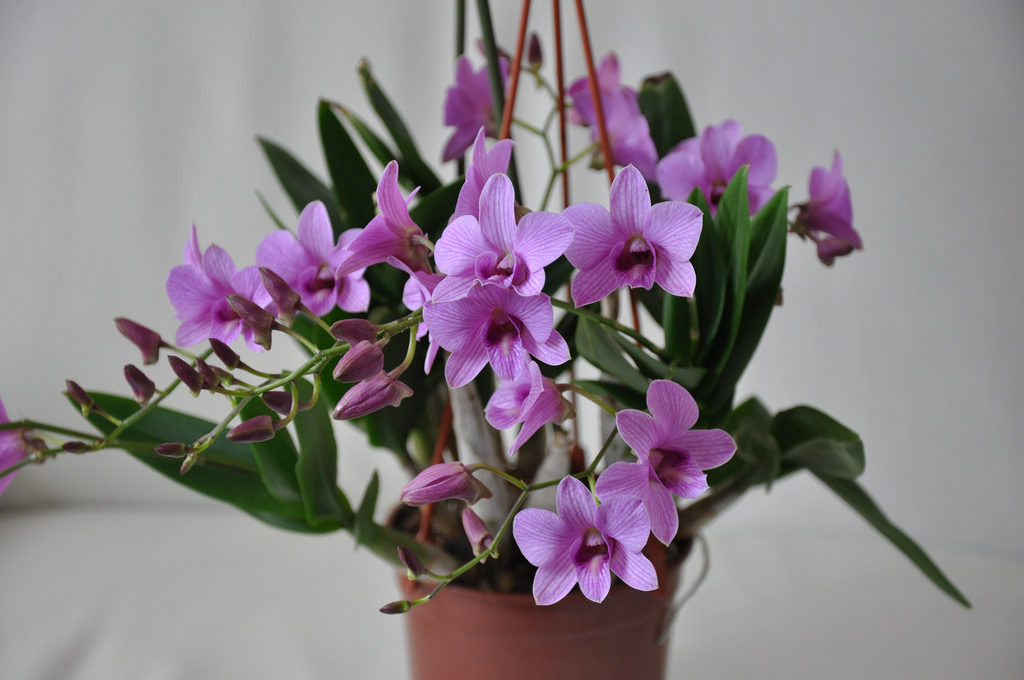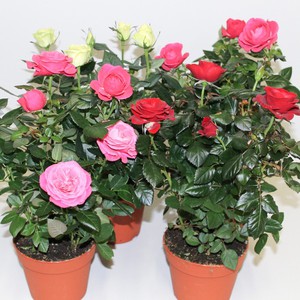The most capacious description of the pandanus is its name, the helical palm. It was first discovered in the tropics, so this plant thrives when provided with sufficient light, water and humid air. You can also grow pandanus in our latitudes, you just need to buy plant seeds and follow the rules of agricultural cultivation and care at home exactly.
Content
Pandanus plant species
A photo of a plant gives only a superficial idea, therefore, before starting to grow it, it will be useful to get acquainted with its features.
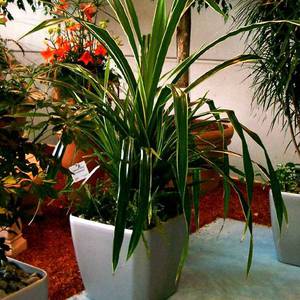 Pandanus immediately declares its extraordinary decorative properties, because under natural conditions it can grow up to 2-4 m in height.It is clear that even with the most careful care of the helical palm, it will be difficult to grow such a giant... However, more compact specimens will also give you a lot of pleasure. Experts recommend cultivating pandanus in high-ceilinged areas where there is plenty of free space.
Pandanus immediately declares its extraordinary decorative properties, because under natural conditions it can grow up to 2-4 m in height.It is clear that even with the most careful care of the helical palm, it will be difficult to grow such a giant... However, more compact specimens will also give you a lot of pleasure. Experts recommend cultivating pandanus in high-ceilinged areas where there is plenty of free space.
At the age of 10–12 years, the plants reach such sizes that the area of an ordinary room is not enough for them. INit is necessary to grow a screw palm in a spacious pot or tub. The pandanus genus includes more than 600 species, which are all represented in the tropics. They feel quite well in our latitudes:
- Pandanus Veitch. Under natural conditions, this plant is found in East Asia. It grows in the form of a tree-like plant, in which a shortened trunk and roots are formed. After some time, the lower part of the trunk completes its life cycle, and from that moment on, the plant's base roots provide support for the plant. Therefore, seeing a spiral palm tree in such a state, it seems to many that the tree is floating above the ground. The plant is decorative with dense green leaves forming tight weaves near the base. When grown indoors in a year, this variety provides the greatest increase in height. To grow a specimen 1.5 m high, you need to wait about 10 years;
- Pandanus called Sandera. This variety is most common in the moist forests of Timor. Adult specimens have a shortened trunk and long leaves up to 90 cm in size. Although this type of spiral palm is suitable for indoor cultivation, first you need to prepare a place so that after the appearance of long leaves, the plant does not feel constrained.
- Useful Pandanus. A characteristic feature of this variety is the helical arrangement of the leaves. Therefore, they can often form three to four storeys of the trunk. Most of the representatives of this species are found in Madagascar and on the island of Mauritius. The uniqueness of the useful pandanus is given by the fact that only it can be grown from seeds, unlike all other varieties.In adulthood, it can reach a height of 2–3 m, although its size may be limited by the area of the growing area.
Unlike other plants, pandanus forms aerial roots regardless of growing conditions. As the palm develops, they become more and more strong, sometimes twine around the lower branches of the tree... Subsequently, they become a support for the plant, which helps the spiral palm look even more impressive.
Pandanus benefits: all about its fruits
 Under natural conditions, pandanus blooms regularly, so such specimens are of interest not only for their leaves and flowers, but also for their fruits. Unfortunately, in indoor conditions, waiting for the pandanus to bloom will not work, no matter how careful the care of the plant is. Only a palm tree that grows in natural conditions can bloom. At this time, the pandanus becomes especially beautiful due to the variety of shades. They give a clue about his gender. In males, as a rule, spikelets are formed, while females can be recognized by their bell-shaped flowers.
Under natural conditions, pandanus blooms regularly, so such specimens are of interest not only for their leaves and flowers, but also for their fruits. Unfortunately, in indoor conditions, waiting for the pandanus to bloom will not work, no matter how careful the care of the plant is. Only a palm tree that grows in natural conditions can bloom. At this time, the pandanus becomes especially beautiful due to the variety of shades. They give a clue about his gender. In males, as a rule, spikelets are formed, while females can be recognized by their bell-shaped flowers.
The pandanus fruit looks quite original, which is very similar to pineapple. However, it is more round. Fruits are considered ripe when they acquire a deep red color., and up to this point they are green or red. Although depending on the place of cultivation, pandanus fruits may differ: in some places, berries that have yellow, blue or orange color can ripen.
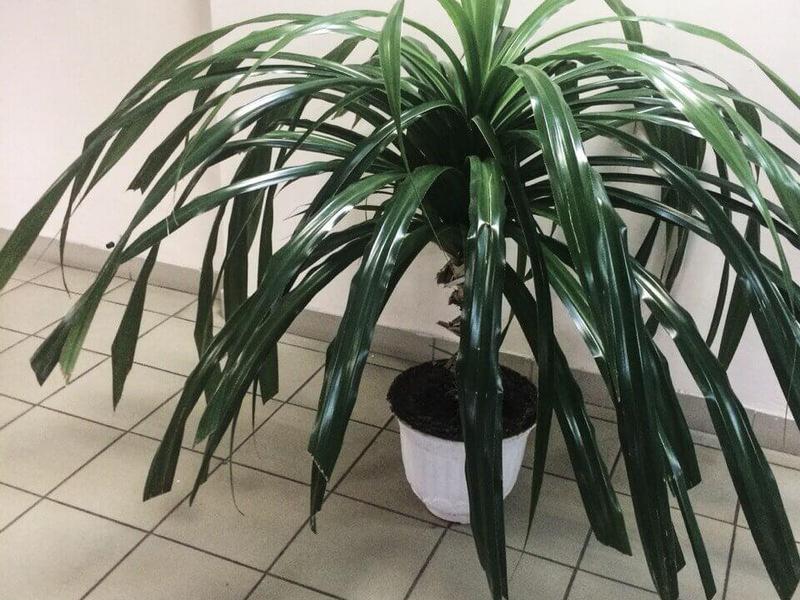
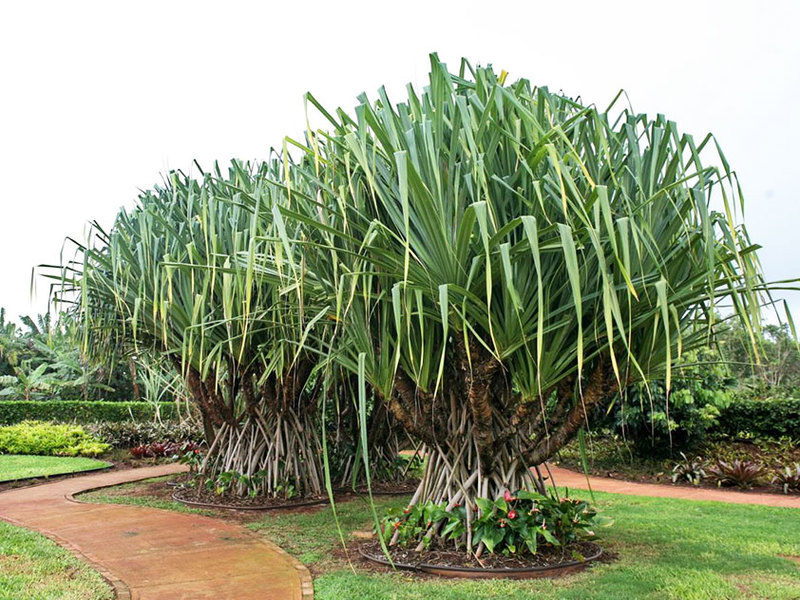
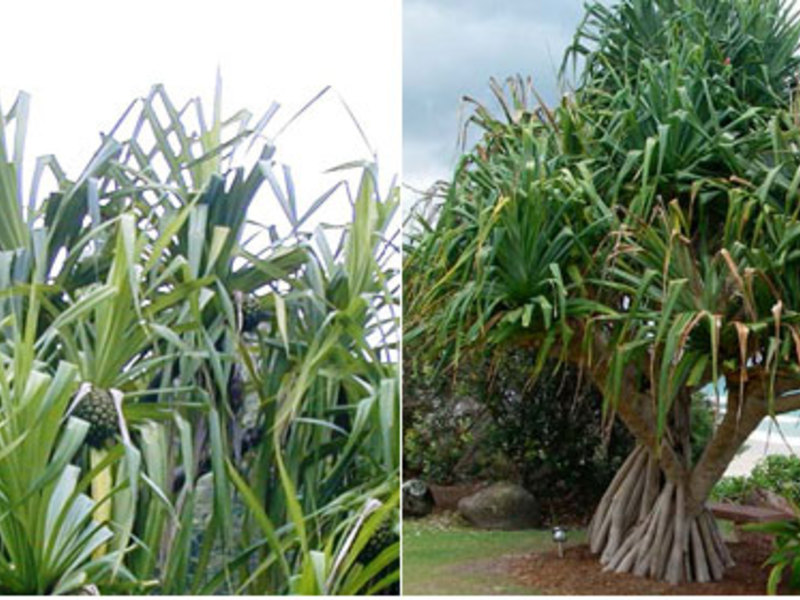
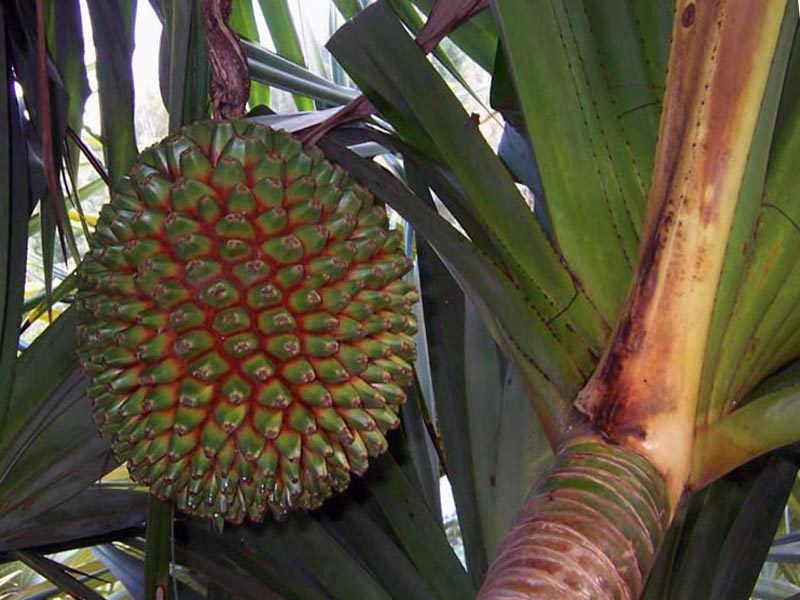
Among the varieties of pandanus, there are those on which fruits suitable for food grow. Therefore, often they do not disdain many types of animals: crabs, elephants and bats. The local population does not refuse them either, using the fruits to prepare various dishes. Moreover, the fruits of pandanus are interesting not only because of their pleasant taste, but also because of their beneficial properties:
- vitamin C;
- cellulose;
- folic acid, which pregnant women so need;
- contains a large amount of potassium, phosphorus and enzymes that improve the activity of the nervous system.
This fruit is not offered for sale; it is not a good idea to use pandanus fruits grown in greenhouses and at home for food, since they differ in their taste and useful properties from fruits growing in natural conditions.
How to grow pandanus from seeds?
Suitable for growing indoors from seed is pandanus pandanus. River or sea sand can be used as planting soil.... In some cases, it can be replaced with a special substrate, which is made from peat (80%) and ordinary sand (20%).
 Many growers practice the method of planting pandanus seeds outdoors in spring or summer. Moreover, a place after sowing is required need to be protected with a jar or other glass containerto ensure the greenhouse effect. In room conditions, it is recommended to use a sand-peat mixture for sowing seeds, and the container where they are planted should be covered with dense polyethylene. After that, the mini-greenhouse must be moved to a warm place, if possible, it should be illuminated by the sun.
Many growers practice the method of planting pandanus seeds outdoors in spring or summer. Moreover, a place after sowing is required need to be protected with a jar or other glass containerto ensure the greenhouse effect. In room conditions, it is recommended to use a sand-peat mixture for sowing seeds, and the container where they are planted should be covered with dense polyethylene. After that, the mini-greenhouse must be moved to a warm place, if possible, it should be illuminated by the sun.
It is possible to speed up the moment of appearance of seedlings of useful pandanus if the plantings are be provided with artificial or natural lighting up to 10-11 hours a day... The first shoots usually appear at the end of the fourth week. However, a lot of time must pass before the favorable moment for their transplantation to a permanent place comes.
How to transplant young seedlings and perennials
A sign that the seedlings are ready for transplanting is when they reach a height of at least 10 cm.However, you need to be very careful here, since pandanus roots are very fragileso they can be easily damaged.To avoid injury, it is recommended to use the transshipment method, be sure to capture a significant portion of the old soil in new planting containers. Experts recommend doing this procedure in the spring.
Instances at the age of 2-3 years usually have time to form aerial roots, they need re-transplanting when the space of the pot becomes insufficient for them... During transplantation, the aerial upper roots should not be immersed in the ground. You shouldn't worry too much about this, since the pandanus grows in the same state in its natural environment.
To minimize the risk of damage to the plant, it is recommended to transplant young seedlings into large pot pots.
Home care: how to grow and maintain an ornamental plant?
 The cultivation of a false palm tree at home is not always successful. There are situations when plants have changes that make the owner seriously think about eliminating them:
The cultivation of a false palm tree at home is not always successful. There are situations when plants have changes that make the owner seriously think about eliminating them:
- Leaves turn yellow. This condition indicates that parasites are present in the plant.
- Brown tips of the leaves. The most likely reason is too hot and dry indoor climate.
- Small leaves of a pale color. This happens when plants lack light.
Location and growth prospects
When growing pandanus at home, follow the same rules as in the case of a regular palm. First of all, you need to create enough space for the plants to grow.... This is especially important for the pandanus, because the leaves will immediately stop growing when they bump into furniture or curtains.
Usually, most novice plant breeders at the stage of sowing a false palm at home do not think about how much space it will need in 5-6 years. Adult specimens have spiny leaves.which can create discomfort when touched. In addition to this, it will not work to put such a giant on the windowsill. Therefore, if the conditions at home do not allow it to be grown to its maximum size, then it is recommended to immediately choose more compact varieties of palm trees.
Growing a pandanus palm: lighting in summer and winter
Pandanus does not tolerate conditions of insufficient light, therefore, the completely expected reaction in this case will be wilting, and sometimes drying of the leaves. They lose their flexibility over time.lose their attractiveness. If you are growing a variegated pandanus variety, then it will definitely change its original color.
For the normal development of the pandanus, you need to provide bright diffused lighting. Direct sunlight is harmful to plants. Therefore, it is recommended to keep the flowerpot in a shaded corner of the room., the windows of which are located on the sunny side. You will also have to take measures to properly shape the crown and trunk. To do this, you need to unfold the pot every two to three days. If this is not done, then the leaves will stretch in only one direction, and this will lead to an imbalance in development.
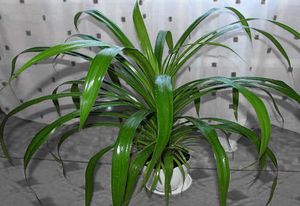 With the onset of autumn, the flower can be installed in a lighted place so that the soft cold rays of the sun fall on it. In some cases, this is not enough, for which the plant reacts by changing the leavesthat become faded and sink. In this case, you will have to carry out additional lighting with lighting devices. Before that, ordinary fluorescent lamps are required, which must be installed above the pandanus at a distance of 60–70 cm from the crown and turned on for 6–8 hours.
With the onset of autumn, the flower can be installed in a lighted place so that the soft cold rays of the sun fall on it. In some cases, this is not enough, for which the plant reacts by changing the leavesthat become faded and sink. In this case, you will have to carry out additional lighting with lighting devices. Before that, ordinary fluorescent lamps are required, which must be installed above the pandanus at a distance of 60–70 cm from the crown and turned on for 6–8 hours.
With a frequency of once a day, it is necessary to ventilate the room, making sure that there is no strong draft.
Description of watering and air humidity
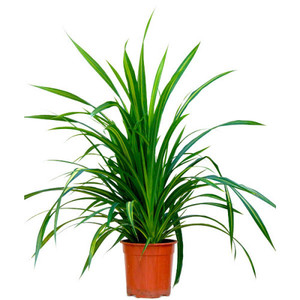 Pandanus can easily tolerate low air humidity, however, it can be seriously damaged by the ingress of moisture into the leaf axils.When caring for a plant, it must be remembered that settled water should be poured only strictly under the roots. Thus, arranging a shower for him is unacceptable. It is recommended to use settled water for irrigation.heated 2–3 degrees above room temperature. It is important to keep the soil moist at all times. If you use cold running water for irrigation, then the plant will experience severe stress, which is better in case of a slowdown in its development.
Pandanus can easily tolerate low air humidity, however, it can be seriously damaged by the ingress of moisture into the leaf axils.When caring for a plant, it must be remembered that settled water should be poured only strictly under the roots. Thus, arranging a shower for him is unacceptable. It is recommended to use settled water for irrigation.heated 2–3 degrees above room temperature. It is important to keep the soil moist at all times. If you use cold running water for irrigation, then the plant will experience severe stress, which is better in case of a slowdown in its development.
When pandanus is grown in conditions of low air humidity, the tips and edges of the leaves, which begin to dry out, are the first to react. This problem can be prevented by wiping the leaves with a damp cloth two to three times a week.Yu. The decorative character of the pandanus is given by its large leaves, so it is necessary to keep them clean. You need to wipe them very carefully, because due to the presence of sharp thorns on them, they can cause a lot of trouble.
Conclusion
Pandanus is a rather original tropical plant that immediately attracts attention due to its impressive size. It is no coincidence received the name "spiral palm"... Even despite the fact that it feels most comfortable in the tropics, it can be grown in the harsh climatic conditions of our country.
However, first you have to take into account some of the features of this palm tree, and, most importantly, what you need to remember is that the pandanus requires sufficient space, since as it grows, large leaves are formed that require space. Equally important when growing it at home, provide an optimal temperature and humidity regime, since for the normal development of pandanus, it is necessary to create conditions as close as possible to natural ones.
